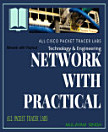Numerical Approaches To 3D Magnetic MEMS
Zoltan Nagy
ธ.ค. 2011 · GRIN Verlag
eBook
81
หน้า
family_home
มีสิทธิ์
info
reportคะแนนและรีวิวไม่ได้รับการตรวจสอบยืนยัน ดูข้อมูลเพิ่มเติม
เกี่ยวกับ eBook เล่มนี้
Master's Thesis from the year 2006 in the subject Engineering - Mechanical Engineering, grade: A, Swiss Federal Institute of Technology Zurich (Institute of Robotics and Intelligent Systems), language: English, abstract: The present work investigates the potential of the finite element method (FEM) in the design process of magnetic Micro-Electro-Mechanical-Systems (MEMS). The magnetic forces and torques acting on a magnetic body are of great importance in wireless actuating principles. Good models are required to allow for precise and predictable motion of the magnetic body. However, analytical results are only available for simple geometries and experiments are often time consuming and may have a certain number of uncertain parameters that may influence the results. Numerical methods, and in particular the finite element method, offer the possibility to study a magnetic body with known material properties in a well defined environment. Consequently, in this work, a method is proposed to calculate the net body torque on arbitrarily shaped bodies in a homogeneous magnetic field using the commercial finite element software Ansys . In addition, a procedure to de- termine the demagnetization factors of these bodies is given. The code is first validated by the known analytical results for an ellipsoid. As an application, the demagnetization factors, as well as the net magnetic torque on brick shaped bodies and the IRIS Microrobot are calculated. A method is proposed to predict the torque acting on the Microrobot analytically. However, experimental results are necessary to confirm this method. Furthermore, Ansys is used to model magneto-structural coupling that is, the motion and deformation of a magnetic body due to an external magnetic field. Two devices are presented (as case studies rather than as actual design concepts), the magnetic resonator and the magnetic scratch drive actuator (MSDA). A quasi- analytical model for the static deflection of the magnetic resonator is given and good agreement with the finite element model is obtained. The MSDA is modeled to show the potential of Ansys in modeling MEMS devices, as additional to the coupling effects, contact elements and spring elements are introduced. Again, experimental results are required.
ให้คะแนน eBook นี้
แสดงความเห็นของคุณให้เรารับรู้
ข้อมูลในการอ่าน
สมาร์ทโฟนและแท็บเล็ต
ติดตั้งแอป Google Play Books สำหรับ Android และ iPad/iPhone แอปจะซิงค์โดยอัตโนมัติกับบัญชีของคุณ และช่วยให้คุณอ่านแบบออนไลน์หรือออฟไลน์ได้ทุกที่
แล็ปท็อปและคอมพิวเตอร์
คุณฟังหนังสือเสียงที่ซื้อจาก Google Play โดยใช้เว็บเบราว์เซอร์ในคอมพิวเตอร์ได้
eReader และอุปกรณ์อื่นๆ
หากต้องการอ่านบนอุปกรณ์ e-ink เช่น Kobo eReader คุณจะต้องดาวน์โหลดและโอนไฟล์ไปยังอุปกรณ์ของคุณ โปรดทำตามวิธีการอย่างละเอียดในศูนย์ช่วยเหลือเพื่อโอนไฟล์ไปยัง eReader ที่รองรับ






